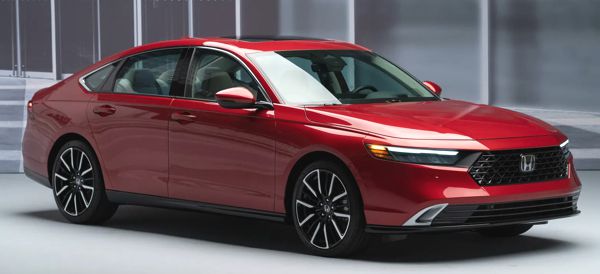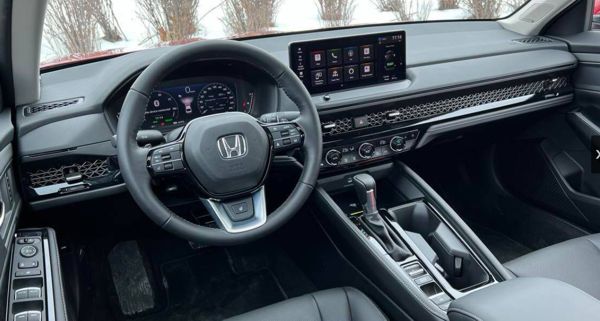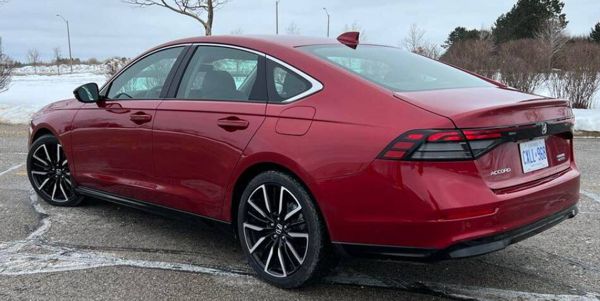Published
on 7
Jun 2023
|
All rights reserved.
|
|

|
|
New
Accord boosts refinement at the cost of driver appeal.
|
|
Born in 1976, Honda Accord
has entered the 11th generation this year. Throughout the years, the
Accord changed a lot, especially its looks, which usually swings from
one end to another. However, one thing has never changed, which is the
emphasis on driver appeal. Remember, Soichiro Honda was an engineer and
a car enthusiast. He started his business by building motorcycles, then
expanded to sports cars and even entered Formula One racing in early
years. His engineering-led approach benefited the company a lot in the
following decades, lifting its reputation beyond Toyota and Nissan. The
Accord has always been a family car aiming at mainstream buyers, but it
is also one of the few – and probably the earliest – to try to please
keen drivers by offering powerful engines and good handling. While some
other rivals follow suit in recent years, they cannot combine driver
appeal with comfort, quality and practicality quite as good as the
Accord. That’s why the Honda sedan usually tops comparison tests.
Unfortunately, under the pressure to build fuel-efficient cars and the
need to compete with Korean cars for costs, we found the Accord becomes
more and more ordinary. In the last generation, the Accord abandoned V6
engine for a 2-liter turbo four. Still, it could be ordered with a
6-speed manual gearbox. Now, the 11th generation has ditched both. The
1.5T base engine is carried over unchanged, including its 192 hp and
192 lbft output, but the 2.0T engine has gone together with manual
gearbox. This means the most powerful model is now the Accord Hybrid,
whose 204 hp combined rating is hardly exciting for a 1600 kg car. Car
& Driver timed 0-60 mph at 6.6 seconds and 0-100 mph in 19.5
seconds. That’s the slowest Accord since the 6th generation ended
production in 2002. For comparison, Toyota Camry V6 manages 5.8 and
14.4 seconds, respectively, while Hyundai Sonata N is even quicker at
5.0 and 12.1 seconds. Fans of Honda must be disappointed.

|
|
Interior
is a big improvement. Problem is, you can get the same dashboard from
Civic.
|
|
Obviously, Honda no longer wants to capture keen drivers with the new
Accord. Instead, it aims at average family car buyers, trying to catch
the majority from Toyota Camry. This might make sense, because mid-size
family car segment is generally declining, thus is more difficult to
support diversity. The change of focus is evident in its bland,
risk-free styling, which might be called “refined” but ultimately
difficult to inspire excitement. Better is the interior, which looks
classier with its higher quality materials and mesh grille vent cover.
Problem is, you can buy a similar dashboard on the smaller Civic.
Fortunately, the Accord offers a bigger touchscreen up to 12.3 inch,
and its back seat is super roomy, even by mid-size car standard.
Under the characterless skin is a platform adapted from the last
generation, which is evident in its identical wheelbase. The body gets
quite a bit longer at nearly 5 meters now though, but width and height
are more or less unchanged. The boot is still capacious, but the
biggest improvement should be refinement. Detailed changes to the
monocoque structure and the use of structural adhesives deliver
slightly higher chassis rigidity. In addition to retuned suspension
with bigger bushings, it returns a smoother ride. Meanwhile, more sound
insulation successfully tames the wind and road noise that used to be a
key complaint. If you look for comfort, the Accord is now a better
option than Camry.
But the flipside is a slightly loss of driver appeal. Admittedly, the
Accord still controls its body motions admirably for a big family car.
Its steering is light and numb but precise. However, its handling is
not to be described as sporty. Its all-season tires, despite
235/40R19-sized, provide limited cornering grip. The 1.5T base model
lacks firepower to excite, while Hybrid suffers from a heavier nose.

|
|
No
more V6, no more 2.0 Turbo, no more manual transmission, no more fun.
|
|
The 2-motor hybrid system is similar to that of the Civic e:HEV. It
mates a direct-injection Atkinson-cycle 2.0-liter engine (rated 146 hp)
to a 181 hp propulsion motor and a generator motor. For most of the
time, the hybrid system runs in series, i.e. the engine turns the
generator which supplies the propulsion motor to turn the front axle.
This means the maximum output is limited to 181 hp, provided the 1.05
kWh battery is not depleted. At steady cruise, it makes no sense to
work in this way, so a clutch engages the engine to drive the wheels
directly, limiting output to 146 hp. Only when you call for
full-throttle acceleration, the combined rating of 204 hp will happen,
but that won’t last long. The Hybrid is quick enough for everyday
driving, of course, but keen drivers wanting the edge displayed by
previous Accord V6 or 2.0T will not be excited.
All come down to the question: is the 11th generation Accord a better
car than the past? From keen driver’s point of view, the answer is
negative. Is it better than the rest of the class? When Ford no longer
produces Mondeo / Fusion, Volkswagen stops renewing Passat and Mazda is
phasing out its 6, the Accord is easily the best choice for buyers left
in the segment. However, it is sad that Honda no longer offers a budget
choice for keen drivers. If you want driving fun, you have to either
downgrade to hatchback or upgrade to premium brands or new EV
offerings, and the latter two options will cost a lot more money.
|
Verdict:     |
|